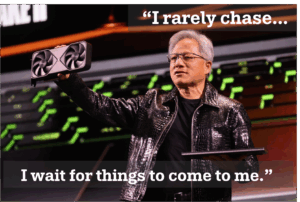Summary Insight:
AI made workers faster — but companies remain slow. The next revolution isn’t in the models. It’s in the structure that lets intelligence flow.
Key Takeaways:
- AI boosts individual productivity but hits systemic bottlenecks.
- The constraint isn’t capability — it’s organizational design.
- Shared context turns disconnected tools into an intelligent system.
This article was originally published on Lex Sisney’s Enterprise AI Strategies Substack.
The Paradox
If AI makes individual knowledge workers 30–40% more productive, why do entire organizations still feel stuck?
It’s not the people.
It’s not the algorithms.
It’s the structure.
Over the past year, most of us have felt the surge of AI‑driven personal speed.
- MIT Sloan found skilled workers 40% more productive.
- Harvard saw a 17–43% lift depending on skill.
Those gaps will soon widen tenfold between the AI‑fluent and the AI‑familiar.
Yet zoom out from the individual, and the numbers vanish.
Many companies are actually slower, weighed down by the cost, complexity, and learning curve of AI adoption.
AI made the edges sharp. But the center still drags.
The Hidden Complexity Tax
As an organization grows, complexity multiplies.
More people, more tools, more conversations—and exponentially more connections to manage.
Every new node adds another web of dependencies.
At some point, one part of the system becomes the bottleneck—the narrowest point that limits throughput for everyone else.
No matter how much effort you pour elsewhere, that constraint dictates your maximum speed.
You can see it four ways:
Operationally: The step or process that can’t handle more demand.
Structurally: The element that caps sustainable output.
Energetically: The zone leaking energy faster than it creates value.
Strategically: The highest‑leverage point to fix first.
Here’s the paradox in plain sight:
AI has supercharged the worker, but their output still hits the bottleneck wall.
You can’t pour a river through a straw.
The Shift: From Productivity Tools to Shared Context
The next wave of AI leverage won’t come from more copilots or automation hacks.
It will come from shared context—making sure intelligence can actually flow through the system.
Without it, you end up with a hundred tiny copilots.
Each one brilliant at the edge, but blind at the core.
The solution isn’t another model; it’s an AI‑enabled context layer—a digital nervous system that connects your data, workflows, and decisions into one coherent brainstem.
In this kind of architecture, every neuron—human, model, or dataset—can sense what the others are doing and adjust in real time.
A Case in Point: Fort Capital
Fort Capital, recently acquired by S2 Capital, was already an outlier in commercial real estate.
- In a decade, the firm built an 11‑million‑square‑foot portfolio and a reputation for speed.
- Its founders, Chris Powers and Jason Baxter, invested early in a custom data warehouse that spotted market trends early.
Yet as growth accelerated, new bottlenecks appeared:
- Deal flow at the top
- Workflow congestion in the middle
- Coordination gaps across teams
The lesson: Every system has a constraint. The key is seeing where it emerges next and clearing it fast.
The Redesign
Instead of treating the symptoms, Fort Capital redesigned around a centralized AI brain and knowledge graph—the forerunner of what’s now Fostr AI.
Every data stream flowed into one place:
- Market intel
- KPIs
- Milestones
- Structure
- Communications
The AI learned from the company’s core cycles:
- Property
- Investor
- Employee
- Strategic execution
Then they put that intelligence to work through a single, context‑aware operating system.
- If a bottleneck is forming, the AI sees it early and suggests fixes.
- Everyone knows what matters each day, week, and quarter—and why.
Data still drives the edge, but now context persists across the entire organism.
The company behaves less like an organization and more like a living system—contextual, adaptive, learning how to learn.
What It Looks Like
On the surface, FostrAI.com looks like a simple dashboard.
Underneath, it’s a live model of the company itself—a unified context layer keeping every function linked.
Ask in plain English—
“What’s blocking this initiative? Who owns the next step? What pattern are we seeing in investor feedback?”
—and the AI answers with the insight of someone who’s sat in every meeting.
This is how bottlenecks dissolve:
by weaving intelligence through the entire system.
Designing the Human Organization
Alongside the AI redesign, Chris and Jason restructured the human system with the principles of Organizational Physics:
Strategy: Clarified
Core cycles: Defined
Structure: Aligned
Decision rhythms: Predictable
Health metrics: Visible
It’s the unglamorous part—but essential.
Because if you drop an AI brain into a dysfunctional company, it won’t save it. It will magnify the dysfunction.
AI amplifies structure; it doesn’t replace it.
The precursor to AI mastery is organizational design that builds:
- Clarity
- Autonomy
- Feedback loops that self‑correct
When you add AI to a coherent system, it doesn’t just work—it accelerates.
That’s the type of environment top talent commits to: intelligent systems built on structural sanity.
The Next Frontier: AI‑Aligned Organizations
The first wave of AI made individuals faster.
The next will make whole organizations alive.
The edge won’t come from bigger models alone, but from shared context—first human, then digital—where intelligence compounds across the entire system.
AI made us more productive.
Now it must make us coherent.
The companies that win won’t just use AI; they’ll think with it.
They’ll sense, learn, and adapt as a single, intelligent organism.
Key Takeaway
AI can fix worker productivity.
But only structure can fix the company.




